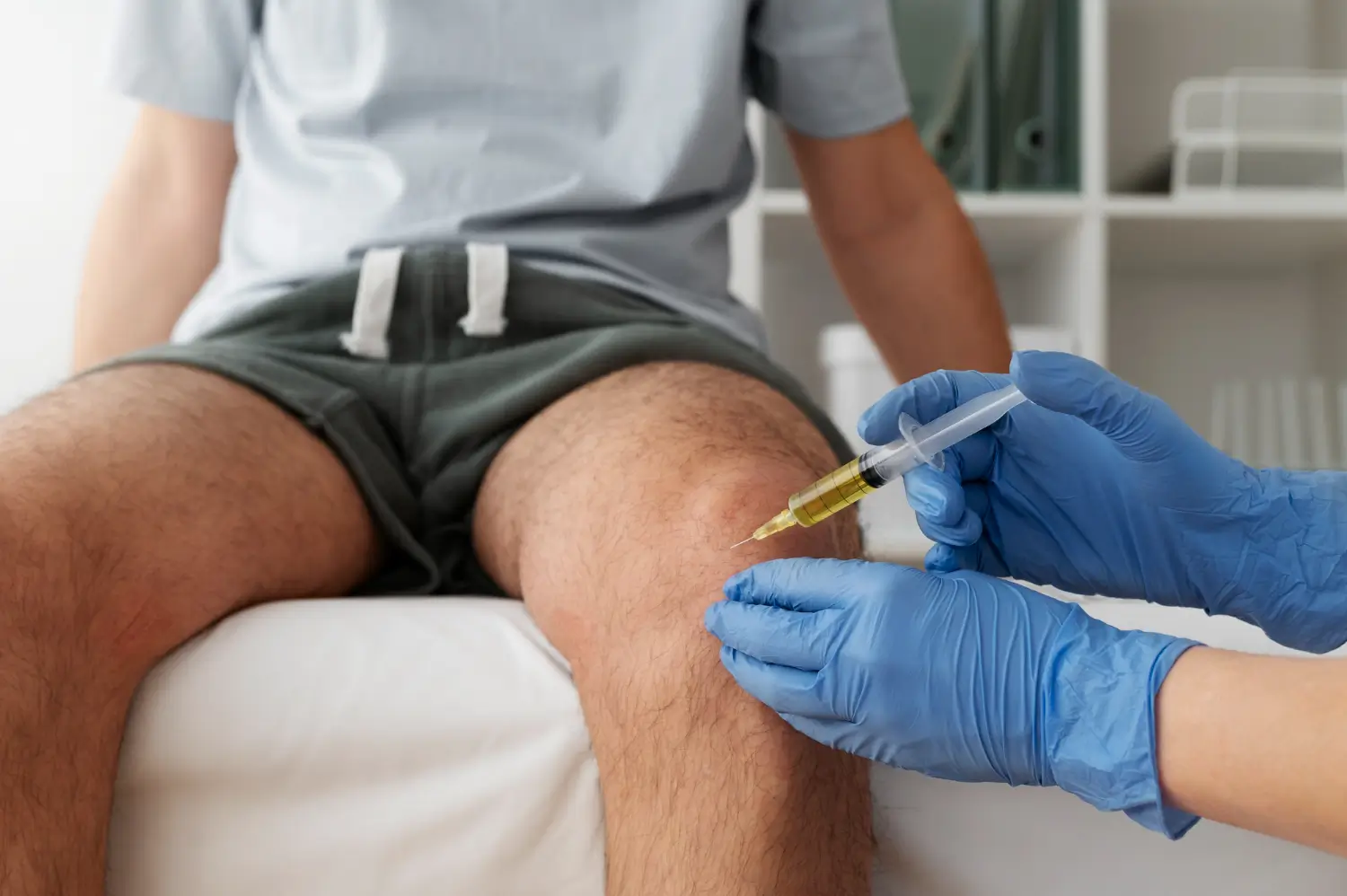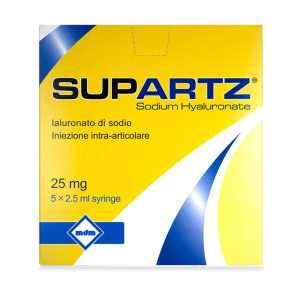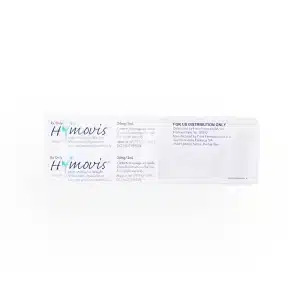Correct dosage is critical in knee osteoarthritis injections, as studies indicate that incorrect amounts can lead to less effective results and increased risk of side effects. Administering the correct dosage is vital for relieving pain and enhancing joint function.
Supartz, a widely used viscosupplement, is designed to reduce knee pain and improve mobility. By injecting hyaluronic acid directly into the knee joint, Supartz restores the synovial fluid’s natural cushioning effect, providing relief for osteoarthritis patients.
In this article, we’ll delve into the recommended Supartz dosage and schedule, offering essential insights to help you make an informed decision about this treatment option.
Key Takeaways
- Supartz is a viscosupplement injection used to alleviate knee osteoarthritis (OA) pain by restoring natural lubrication in the joint.
- Standard dosage involves weekly injections over 3 to 5 weeks, with each session containing 75-125 mg of sodium hyaluronate for effective relief.
- To tailor the dosage and optimize results, patient-specific factors, like health history and previous response to treatments, are considered.
- Personalized treatment adjustments and regular follow-ups are essential to monitor progress and ensure long-lasting mobility improvements and pain relief.
- Side effects are generally mild, including possible swelling or discomfort at the injection site, which typically resolves with post-care.
About: Medical Spa RX provides medical practices with premium products at the best prices. If you’re looking to buy Supartz online for your practice, the sales representatives at Medical Spa RX can give you guidance.
What is Supartz?
Supartz is a hyaluronic acid injection specifically formulated to treat osteoarthritis (OA), a degenerative joint disease marked by the breakdown of cartilage. This breakdown leads to pain, stiffness, and reduced mobility. Supartz injections are designed to relieve these symptoms, aiming to enhance the quality of life for individuals affected by OA.

It copies a substance similar to the natural hyaluronic acid (HA) found in the joint fluid (synovial fluid). The HA acts like an oil and pillow in healthy joints, allowing them to move smoothly and painlessly. In joints afflicted with OA, the HA becomes less diluted and less effective, contributing to the symptoms of the disease.
By injecting Supartz directly into the affected joint, the goal is to restore the viscosity and elasticity of the joint fluid. This helps to:
- Alleviate Joint Pain: Increased lubrication reduces friction, lessening pain and irritation within the joint.
- Improve Mobility: Enhanced joint fluid enables smoother movement, potentially improving range of motion and overall joint mobility.
- Slow Down Degeneration: Improved joint function may help slow cartilage degradation, supporting long-term joint health.
Standard Supartz Dosage and Treatment Regimen
The recommended dosage and treatment schedule for Supartz injections for knees are tailored to alleviate pain and enhance mobility. Supartz treatment generally follows a structured weekly regimen to ensure effective relief from osteoarthritis symptoms.

- Treatment Duration: Typically spans 3 to 5 weeks.
- Injection Frequency: Once per week.
- Total Injections: A series of 3 to 5 injections, depending on the severity of symptoms.
- Dosage: Each injection contains 75 to 125 mg of sodium hyaluronate.
Supartz injections are administered directly into the knee joint, with each knee treated individually. For those with milder OA, fewer injections may be sufficient, while more severe cases often benefit from the full 5-shot regimen. Doctors may adjust the treatment plan based on each patient’s response and level of discomfort.
If needed, another round of injections can be discussed after a recovery period. Weekly sessions help maintain consistent results, offering effective relief and improved joint function.
Factors Influencing Supartz Dosage
Determining the appropriate Supartz dosage requires a personalized approach, as each patient’s health status, medical history, and response to treatment play a critical role. Healthcare providers consider several factors:
- Health History and Past Treatments: Doctors review the patient’s medical history, including previous treatments for knee pain and their effectiveness, to decide if adjustments to the Supartz regimen are necessary.
- Reaction to Prior Treatments: If other methods failed or caused adverse reactions, this information helps refine the Supartz dosage.
- Knee Joint Condition: In some cases, fluid from the knee joint may be removed before administering Supartz to improve efficacy.
- Patient Response and Tolerance: Providers closely monitor how each patient responds to Supartz injections, adjusting dosage or frequency if needed to optimize results.
These factors allow for a more tailored and effective treatment plan with minimal side effects.
Adjusting Supartz Dosage for Personalized Treatment
Every patient is unique, and the approach to treating osteoarthritis with Supartz should reflect this individuality. Doctors consider a range of patient-specific factors to determine the most effective dosage and schedule. These factors may include:

- Severity of Osteoarthritis: Patients with more advanced stages may require a more intensive treatment plan.
- Age and Weight: These can influence how the body metabolizes the hyaluronic acid.
- Overall Health: Patients with other underlying health conditions might need a customized treatment approach.
- Activity Level: More active patients may benefit from different dosage adjustments compared to less mobile patients.
Regular monitoring is crucial throughout treatment to assess how well the patient responds to Supartz injections. Healthcare providers will:
- Evaluate Pain Levels: To determine if there is a noticeable reduction in pain.
- Assess Mobility: To see if the range of motion and joint function are improving.
- Check for Side Effects: To promptly address any adverse reactions.
Based on these observations, doctors can make necessary adjustments to the treatment plan, such as altering the dosage or extending the duration of therapy.
Importance of Regular Follow-up Appointments
Regular follow-up appointments are a key part of personalized treatment. These check-ins allow the healthcare provider to evaluate the treatment’s progress, discuss any side effects, and decide whether adjustments are necessary to maintain pain relief and mobility.
By adapting the approach to each patient’s unique needs, healthcare providers can help patients experience the best possible outcomes with Supartz.
Conclusion
Supartz treatment typically involves weekly injections for 3 to 5 weeks. Doctors adjust the dosage based on each patient’s response and monitor progress closely. This personalized approach ensures the treatment plan is effective, addressing the patient’s needs for optimal pain relief and improved mobility.
FAQs
1. How long do Supartz injections take to provide relief?
Supartz injections usually provide relief within the first few weeks, with significant improvements typically observed after completing the full 3-5 injection regimen.
2. What is the generic name for Supartz?
The generic name for Supartz is sodium hyaluronate, a form of hyaluronic acid designed to restore lubrication in the knee joint affected by osteoarthritis.
3. Are Supartz injections covered by insurance?
Coverage varies, so it’s essential to check with your insurance provider. FDA-approved for knee OA, Supartz may be covered under plans that include viscosupplement injections.
4. Are there any activity restrictions after receiving Supartz injections?
Yes, patients should avoid strenuous activities and heavy lifting for 48 hours post-injection. Light walking and avoiding high-impact activities help the knee recover optimally.
References
Wallace IJ, Worthington S, Felson DT, et al. Knee osteoarthritis has doubled in prevalence since the mid-20th century. Proceedings of the National Academy of Sciences. 2017;114(35):9332-9336. doi:10.1073/pnas.1703856114
Supartz FX. RxList. Published June 14, 2022. https://www.rxlist.com/supartz-fx-drug.htm





















